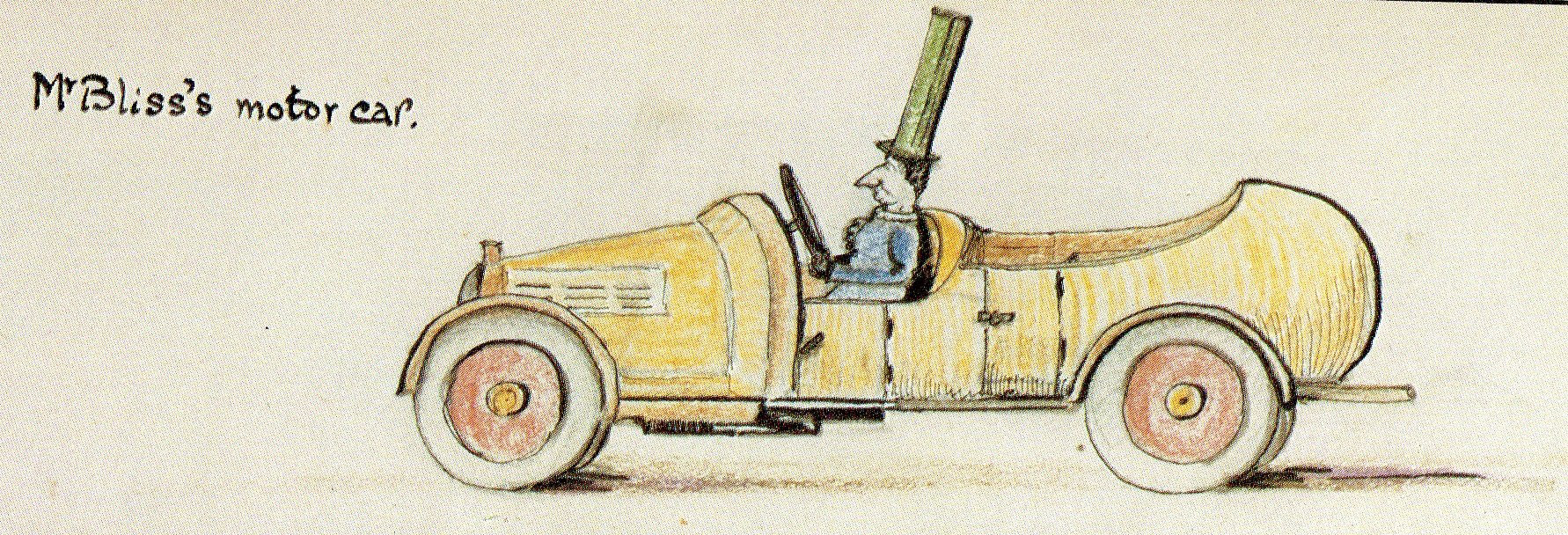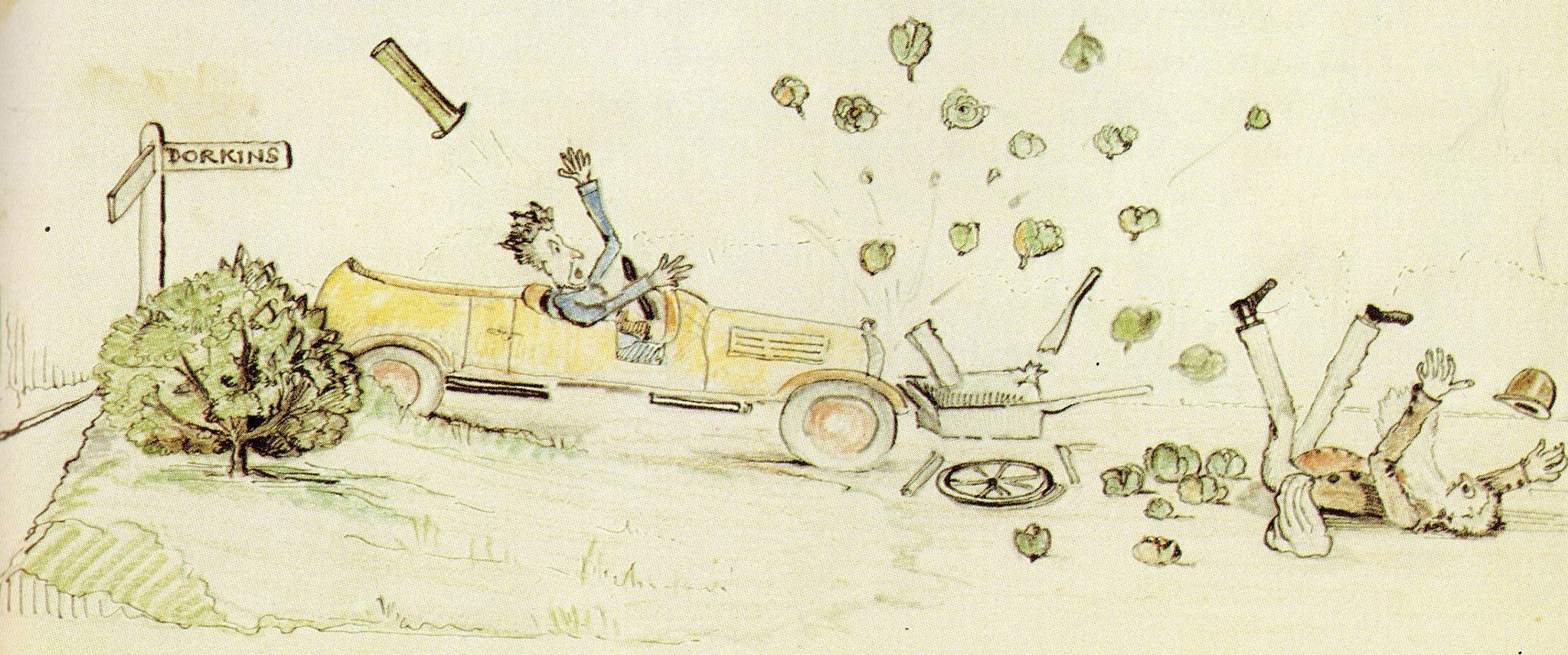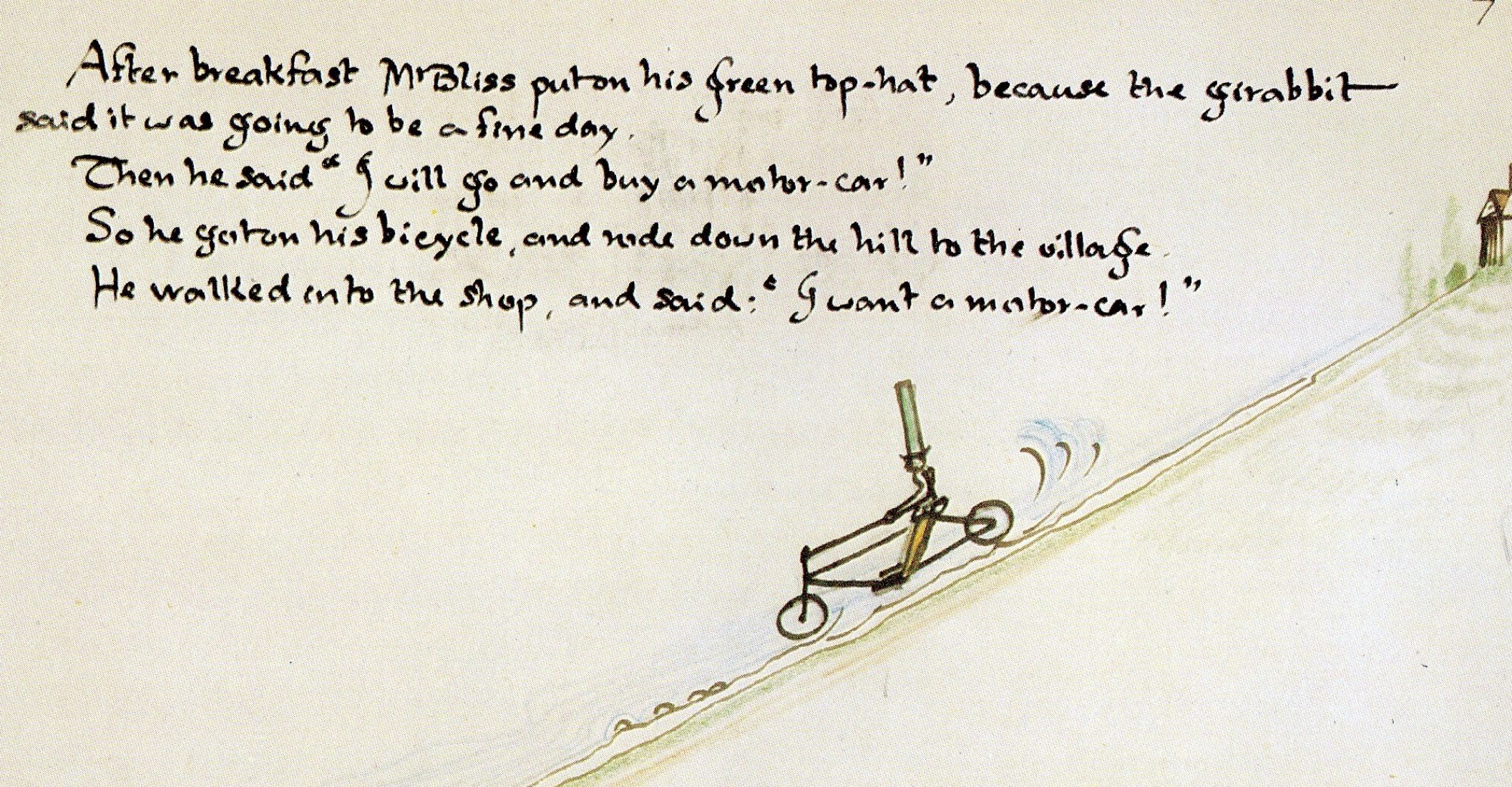TOLKIEN RODE A BICYCLE. WHAT ABOUT YOU?
“Is it going to be a fine day?” Mr. Bliss asked the Girabbit which he kept in the garden and liked to predict the weather though it was blind, so the it never knew if the sun was shining of not. Mr. Bliss put on his green-top hat and said: “I will go and buy a motor-car!” So he got on his beautiful bicycle, all silver, and rode down the hill to the village. It was a bright yellowed inside and out motor-car with red wheels. Mr. Bliss got into it and started off. This whimsical decision quickly became a catalogue of disasters: he ran over Mr. Day, crashed with Mrs. Knight, smashed over the Dorkins’ wall, had to flee terrified from the forest because of a trio of bears, and even had to face a frenetic multitude. Finally he solved his problems because Mr. Bliss was a gentleman. The truth is that he took a great antipathy to the motor-car, so he went back to ride his silver bike and everything returned to be like before, unless that he got rid of the green hat, that now is used by the Girabbit. [i]
During his visit in Madrid, the architecture critic Kenneth Frampton commented: “The automobile is the most apocalyptic invention of all time. Still more that the atomic bomb… and there is no turning back”.[ii] But with this premise, why am I bringing up a children’s story? I could write about the prejudices that the urban development for the four wheels has brought, or on the contrary, about the thousand benefits of the bicycle. Nevertheless, I remembered when Alison Smithson wrote about “Beatrix Potter’s Places” and their relationship with modern architecture: it might seem far-fetched to bring nursery books into the force of it. “Their inclusion might be totally laughed off as fancy were this books not in themselves such ‘total manifestations’.”[iii]

Ilustración por J.R.R. Tolkien en “Mr. Bliss”
To talk about Tolkien’s work means to talk about his life, although he would said that exploring the life of an author reveals just a little about his creative work. For this reason, this text is neither an attempt to deepen in his well known allegories like the relations between parts of his works and his ecologic thinking or his rejection to the consequences of the industrial revolution, nor to make conjectures about his profuse imagination. As his biographer comments, one could say that the data of his daily life as riding a bicycle, do not help to explain the nature of his mind and how his imagination responded to his environment. Nevertheless, he doesn’t give up, and after venturing some suppositions, even if he wouldn’t have a more precise idea about why Tolkien wrote his books, at least he would know better the man that did them. [iv]
It was how, based on a ventured assumption, I imagined not only that Tolkien rode a bicycle, but that he was reluctant to automobiles. Digging in his life I found several details. Tolkien bought his first automobile in 1932. At the steering wheel he was bolder than skilled, and he didn’t get rid of misfortune. Added to this, was the rationing of gas, which motivated him to soon come off his second automobile. At this time he became aware of the damage caused by the internal combustion engines and the new roads in the landscape. After the war he never again bought or drove a car.

Ilustración por J.R.R. Tolkien en “Mr. Bliss”
We can also find evidence through his works. The Bovadium Fragments, like Mr. Bliss, is an oeuvre inspired in the motor transport. The story is a parable of the destruction of Oxford (Bovadium) by the motors manufactured by the Daemon of Vaccipratum (a reference to Lord Nuffield and his motor-works at Cowley), which block the streets, asphyxiate the inhabitants, and finally explode. Also in Roveramdom, his antipathy to the highways can be perceived through some brief (but revealing) descriptions.
But this antipathy verified through his life and oeuvre, presents a more suggestive and motivating face. Thus, it was how I chose to write about Tolkien, a prodigious and inspiring mind that rode a bicycle. In it, he secretly arranged with Edith –the love of his adolescence and later his wife– to take a ride next to her. Afterward, he also rode next to his children either to go to the church or to take a trip. In his bicycle he rode into the darkness, with a trembling oil lamp, in the muddy playing fields of his school. He used it to go to the University too: with his briefcase and his M.A. gown in the basket of his bicycle, he rode to his classes in Oxford where he was a professor. He also rode to the supermarket, to the stationery, to the meetings in the English Faculty or to the encounters with his intimate friend C.S. Lewis.
No one really knows if in the middle of the itineraries in two wheels of J.R.R. Tolkien most of his fantastic ideas got cooked. I like to think so. In the creativity universe anything is a coincidence… So he rode a bicycle, what about you? …

Ilustración por J.R.R. Tolkien en “Mr. Bliss”
NOTES.-
[i] Extract from a children’s story written by J.R.R. Tolkien for his kids, generously handwritten and drawn by himself with ink and color pencils. TOLKIEN, J. Ronald R. “Mr. Bliss”. Harper Collins Publishers Limited. 2011.
[ii] Zabalbeascoa, Anatxu. “Kenneth Frampton: ‘El coche es un invento más apocalíptico que la bomba atómica’”. In: Diario El País. Madrid. Junio 2011.
[iii] SMITHSON, Alison. “Beatrix Potter’s Places”. Architectural Design. December 1967.
[iv] CARPENTER, Humphrey. “J.R.R. Tolkien. A biography”. G. Allen & Unwin. 1977.






















